by Neil Bunker
[Editor’s note: This interview was first published on Diagonal Move. —WEM]
Survive: Escape from Atlantis! designer Julian Courtland-Smith joins Neil Bunker from Diagonal Move to discuss his remarkable forty-year career designing board games:
DM: Hi, Julian, thank you for joining us. Please can you tell us how you got started in game design?
JCS: When I was a child I loved playing board games. After I left school, I went into catering. Didn’t care for it so went on to art college. I wasn’t sure what I wanted to do, probably architecture. In 1965, whilst I was making up my mind as to what direction to go in, I read an article in a magazine about games. It was by Waddingtons, publicizing their new product Mine A Million. That was the moment I thought I can do that and become rich and famous! Ha! Easier said than done!
My first design was a world domination game, akin to Risk. Looking back, it was rubbish. Well, you have to start somewhere. I worked in retail management and spent my nights and weekends inventing numerous games. However, it was 17 years before I had a game accepted.
DM: Survive: Escape from Atlantis! is your most well-known game. Where did you draw inspiration for the game from?
JCS: After I’d invented Lost Valley of the Dinosaurs I was looking around for another strong theme when I chanced upon a row of books in my local library all about the island of Atlantis. These inspired me to devise a game with a sinking island.
DM: Can you elaborate on the design process?
JCS: My first attempts at devising “Escape from Atlantis” didn’t really work as I drew the island on the board. During play, the island was slowly covered by sea tiles to effect sinking. When tokens were moved across these tiles, they all shifted and knocked down other meeples like men in boats. It was two years later before it dawned on me to change the sea tiles to land tiles. That way the island could be removed piece by piece from the board during play to simulate it sinking. I called the game “Escape from Atlantis” as the title summed up the game’s objective.
DM: How did you get “Escape from Atlantis” to market?
JCS: I took my 2D prototype to Graeme Levin, owner of Games & Puzzles magazine. He became my agent and showed it to Parker Brothers. They liked it and made it their lead game in 1982 in America. They changed the name to Survive! and altered the game in a number of ways. It was advertised coast to coast in the States and sold very well. At the time Survive! was selling 14,000 copies a week compared to Monopoly‘s 12,000.
Unfortunately, computer games came out and the winter of ’83 saw a massive 80% drop in the board game industry as people were buying the new computer games. Board games bounced back a couple of years later but never recovered their dominance in the market. Parker Brothers dropped the game, and it dragged on until closeout a few years later. In 1986 Lost Valley of the Dinosaurs was launched in the UK. It did very well, coming in at #2 to Trivial Pursuit in the bestsellers list. I remember saying it would never catch on. What do I know!
Waddingtons phoned and asked if I had another 3D game. I confidently said yes! I had two weeks to turn Survive! (2D) into a 3D game. I remember sawing up a wooden hoe handle to make the island’s land-tiles. Waddingtons launched their 3D version of Survive! and agreed to call it Escape from Atlantis!
DM: Survive! has been an incredible success and is still available 38 years after its original release. What do you attribute this success to?
JCS: When Survive! was launched there was nothing like it on the market. Starting off in the mass market gave it great impetus. The turbulent years of the 1980s/90s when companies were either going under or being taken over meant I was constantly taking my prototypes from one company or another. I knew to be financially successful that I needed a major manufacturer to market the game, hence I only dealt with the top five companies in the world. I had many offers from smaller companies but decided to hold out for the big one. When Hasbro took over Waddingtons in the 1990s, I submitted my game to them and they relaunched Escape from Atlantis into Europe in 1996 under the Waddingtons brand.
The game ran until 2002 and was off the market for a number of years. Meanwhile, Survive! reached #1 in the secondhand board game market. Stephen Buonocore of Stronghold Games in the USA was looking to relaunch popular retro games. He saw copies of Survive! trading on eBay for up to $100. He thought if there was that much demand for this game secondhand, perhaps there’s a market for a new product. He became my new agent, and in April 2010 announced that Stronghold Games would be reprinting a new version of the game called Survive: Escape from Atlantis!
The game was launched on October 10, 2010. In June 2012, Stronghold Games relaunched a new edition, Survive: Escape From Atlantis! – 30th Anniversary Edition, which is still on sale today. It included refreshed artwork and a slightly revised theme. Simultaneously, French publisher Asmodee licensed the EU languages and launched The Island, which is the same game as Stronghold’s version but with a rebranded name for EU trademark purposes only.
Yes, my game has done the rounds with a lot of publishers. End of the day, it’s the public who decide. I’m pleased and grateful that games players today enjoy playing Survive! I get messages from fans who say they enjoyed the game in their childhood and are now playing it with their children and grandchildren. I’m pleased Survive! has lived up to its name.
DM: What influence do you think the success of Survive! has had on the games industry?
JCS: Games evolve just as art, music and literature do. Each new artist, author, or designer is influenced by preceding works. Good games, popular games have always been copied.
There are a number of games out there which appear to be influenced by Survive! Catan (1995) comes to mind as does Forbidden Island (2010). I think the biggest change Survive! brought to the market was hexagonal spaces on the board, thus allowing tokens more efficient movement. Before then, you saw hexagonal spaces only in war games.
Prior to my games, there were countless Monopoly-style variants where you commenced play from one corner and went round the edge of the board or track rolling dice. This trend had continued from Victorian days. I wanted to break out of that niche and use the whole board in play.
I do believe the same level success can be repeated despite market saturation that has occurred following the advent of Kickstarter. Survive! has remained successful because the play mechanism hasn’t dated. Being the first such game, this style of board game has endured. Someone will come along one day with fresh ideas and usurp the market, then we’ll see a whole new trend emerge.
DM: Did the success of Survive! change your life?
JCS: Guess so. It was literally a rags-to-riches story. Prior to the success of Survive!, I was broke and unemployed, scratching a living doing odd jobs, but I persisted with my dream. Following the success of Survive!, I became a full-time designer and moved with my family from a three-bedroom council house to our five-bedroom country house. Whilst there, Waddingtons launched Lost Valley of the Dinosaurs, followed by Escape from Atlantis. The government wanted to tax me at 60% which was crippling, so we emigrated to Eire. We stayed there awhile, and in 1987 moved to the beautiful Isle of Man.
DM: You designed Lost Valley of the Dinosaurs before Escape from Atlantis. Can you tell us more about that game?
JCS: I invented Lost Valley of the Dinosaurs in 1979. I got the idea whilst standing on a London Underground station waiting for a train. On the wall was a poster advertising a dinosaur exhibition at the Natural History Museum. That was my eureka moment. I thought great idea for a game! I was highly influenced by Sir Arthur Conan Doyle’s 1912 book The Lost World.
Inspired, it took me just two weeks to invent the game, six weeks to write the rules, and six years to get it to market. Before Waddingtons took the game I approached a number of manufacturers. I remember a Dutch company turning it down as it was “racist”. At that time the men in the jungle were represented by small black Halma pieces, so I changed them to small white Halma pieces and called them Incas. Initially, the pteranodon in the game was a picture on a card. One day, I chanced upon a retailer selling small plastic pteranodons. I introduced that to the game as a playing piece. Waddingtons turned this bird into a moving toy, and it became a big hit with the kids.
DM: How was the design process for Lost Valley of the Dinosaurs different from that of Survive!?
JCS: I was six years trying to market Lost Valley of the Dinosaurs. During that time the game was extensively playtested by my family and friends until it worked perfectly. There was no pressure back then to deliver another game as games contracts were always one-offs, unlike books. When new authors get their first book launched they will normally sign a contract to produce more. With games you’re only as good as your last but your reputation does get you interviews.
Games manufacturers of old retained artistic control. You were lucky if you got your name on the box! The first print runs of Waddingtons’ Escape from Atlantis, which were 25,000 copies, did not give me any accreditation, even though it was written into my contract. Later, after a fuss, they agreed to mention me in the rules. Companies would, if they so chose, alter the rules or change components. The swirler dice in the Waddingtons Escape from Atlantis game was included by them, but to be fair, it proved popular with children.
By and large, Waddingtons’ Escape from Atlantis didn’t differ too much from my prototype, but Lost Valley of the Dinosaurs was radically altered. I was trying to break with tradition and designed the game with no dice. Waddingtons decided to include dice as they reasoned children like to roll dice. They also made a number of other changes, which is why I always say Waddingtons’ Lost Valley of the Dinosaurs is their version of my game.
DM: Are there plans for a Lost Valley of the Dinosaurs re-release?
JCS: I have been approached many times over the years by companies wanting to market Lost Valley of the Dinosaurs (LVD). In 1987 I divorced. My wife and I agreed to split ownership of all the games I’d devised during marriage. Hence, she retains copyright to LVD whilst I own EFA. My ex-wife has indicated that she would be open to offers, but that she wants the game marketed as it was originally designed.
Publishers always want to input their creativity which can be an improvement or not. As I said, Waddingtons’ Lost Valley of the Dinosaurs was nothing like the original. I tend to agree with her. Had LVD been marketed as invented, I believe it would still be around today as in its original form, it’s better suited to the hobby gaming market.
DM: What other games have you designed, and do you have plans to release any others?
JCS: Too many to list here. I’ve designed well over fifty games to date.
I did produce a third game in my adventure trilogy called “Mammoth Mountain”. The game has a strong theme which includes prehistoric animals of the period like woolly mammoth, sabre-toothed tiger, and so on. The game involves armed conflict between tribes fighting for survival whilst the world is slowly freezing over. When I presented it to Waddingtons, the games industry was in turmoil. Waddingtons were facing extinction therefore weren’t prepared to launch “Mammoth Mountain” or any other games.
In the intervening years I devised a number of products, including a debating game called “Controversy”. I was turned down because it was considered too controversial.
Late 90’s, I devised a range of 3D hand-held magnetic puzzles. Hasbro turned them down due to production costs. The magnets in my design precede today’s neodymium magnets! Had I been able to acquire cheaper components, I believe they would have got to market.
When I took Escape from Atlantis to Waddingtons, I also produced a space theme of the game in case they preferred that. Years later Stronghold Games told me they were interested in marketing a space version of Survive! It was “re-imagined” by American designers Brian, Sydney and Geoff Engelstein and called Survive: Space Attack! I had very little input into the product; any co-developing by me was done via Stronghold Games CEO, Stephen Buonocore.
In recent times I have invented games for a younger market, for example, “Diamond Quest”, a ludo-style game based in India of old which is enjoyed by my grandchildren.
Regards Survive!, a new Japanese version of the game was launched in 2020 and is doing well. Also, there are plans in the pipeline for another version of Survive!, hopefully in 2021. Watch this space!
DM: Finally, do you have any advice for aspiring game designers?
JCS: Start with a good, strong theme. Once you have that, try to match the theme with a major mechanism as in the island of Atlantis sinking in Survive! From there have some rough ideas about minor mechanisms like meeple movement, die rolls, cards.
Maths must come into the game straight away. How many players? How many spaces on the board? How many tokens, cards, etc. All these need to “balance” so that play runs smoothly. Size of spaces and tokens is important. Make your game appeal to as wide an age group as you can. The greater the age group, the wider the audience, the bigger the market. 8-80 is perfect.
Make rules concise, to the point. Easy to read. Don’t make the game difficult to play. It’s easy to add a new rule to solve a problem in play. Much better to concentrate on getting the game play working smoothly.
The days of games lasting all day and night, like Risk, are long gone. Time each player’s move, ideally making the game last up to an hour and a half. Try to build into the game a natural ending. Last, but not least, playtest, playtest and playtest. To give you an idea, Lost Valley of the Dinosaurs was playtested over two hundred times.
Finally, can you think of a new way of playing a game? Hard ask I know, but try to break out of the mold. Break with tradition, start a new trend and with luck your game will be around for the next fifty years!
The post Designer Interview: Julian Courtland-Smith, creator of Survive: Escape from Atlantis! appeared first on FanFareGames.
from https://boardgamegeek.com/blogpost/104883/designer-interview-julian-courtland-smith-creator
from
https://fanfaregames.tumblr.com/post/619778975435276289

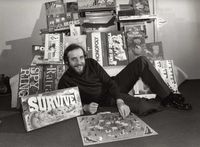
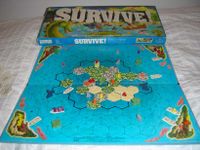
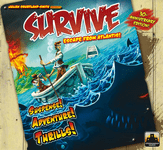
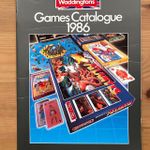
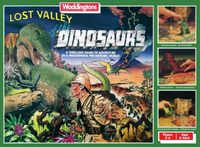
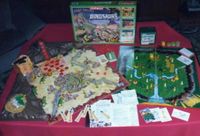
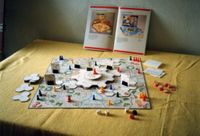
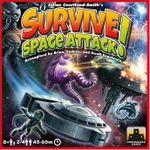
No comments:
Post a Comment